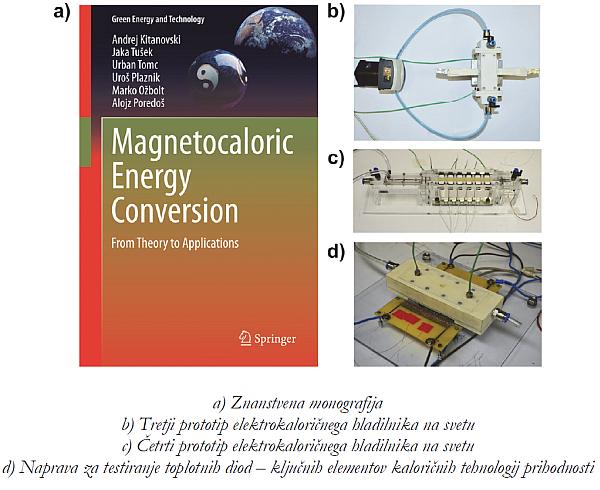
The Laboratory for Refrigeration and District Energy (LAHDE), part of the Ljubljana faculty of engineering, has created the first prototype of a regenerative elastocaloric refrigerator. Their measurements show that even in its beginning stage it is almost as energy efficient as classic refrigerators - potentially even better. The results were published in the Nature Energy journal. The prototype was created in cooperation with the Technical University of Denmark.
"We have created the first such system in the world, which although still in its prototype stage, has been very well received by the world public. We have surpassed all our previous results while working on similar technologies and in a way opened the door to further progress in this field," explained Jaka Tušek, the co-author of the research from LAHDE, to MMC.
A refrigerator is a device which takes away the heat from a certain space or object and channels it elsewhere. In a similar way a kitchen refrigerator use gases which take away temperature degrees from the fridge interior and transfer them into the kitchen air. The gas is contained in a system of pipes. On one side it is compressed and liquefied, while on the other side it expands and heats up, taking away the heat energy from the foodstuff. This compression technique is almost one hundred years old and has two main weaknesses, says Tušek. First of all it is relatively not very energy efficient, which means that, depending on the coolness required, fridges use up a lot of energy. And second, the energy it uses is not really green energy. It is true that refrigerators are no longer filled with Freon, which decimates the ozone layer, but the fillings are still a cause for the "hotbed effect".
The Laboratory for Refrigeration and District Energy has replaced gas with a piece of superelastic metal - an alloy of titanium and nickel - and has exposed it to the above-mentioned law of thermodynamics. The alloy was first placed in a room temperature of 20 degrees Celsius. The piece of metal was quickly expanded by four percent and it heated up to 35 degrees in the process.
Water from the heated material, which also gained in heat, was then extracted. At the same time the alloy cooled back down to room temperature. What followed was the contraction phase, in which the metal's temperature fell from room temperature to below ten degrees Celsius because of a return phase deformation. The water, which also cooled down by then, was then poured over the material again. "With cyclic activity and adequate water extraction we get on one hand warm water, and on the other hand cool water," said Tušek. The cycle, which always requires a little bit of energy, is then repeated.

































































